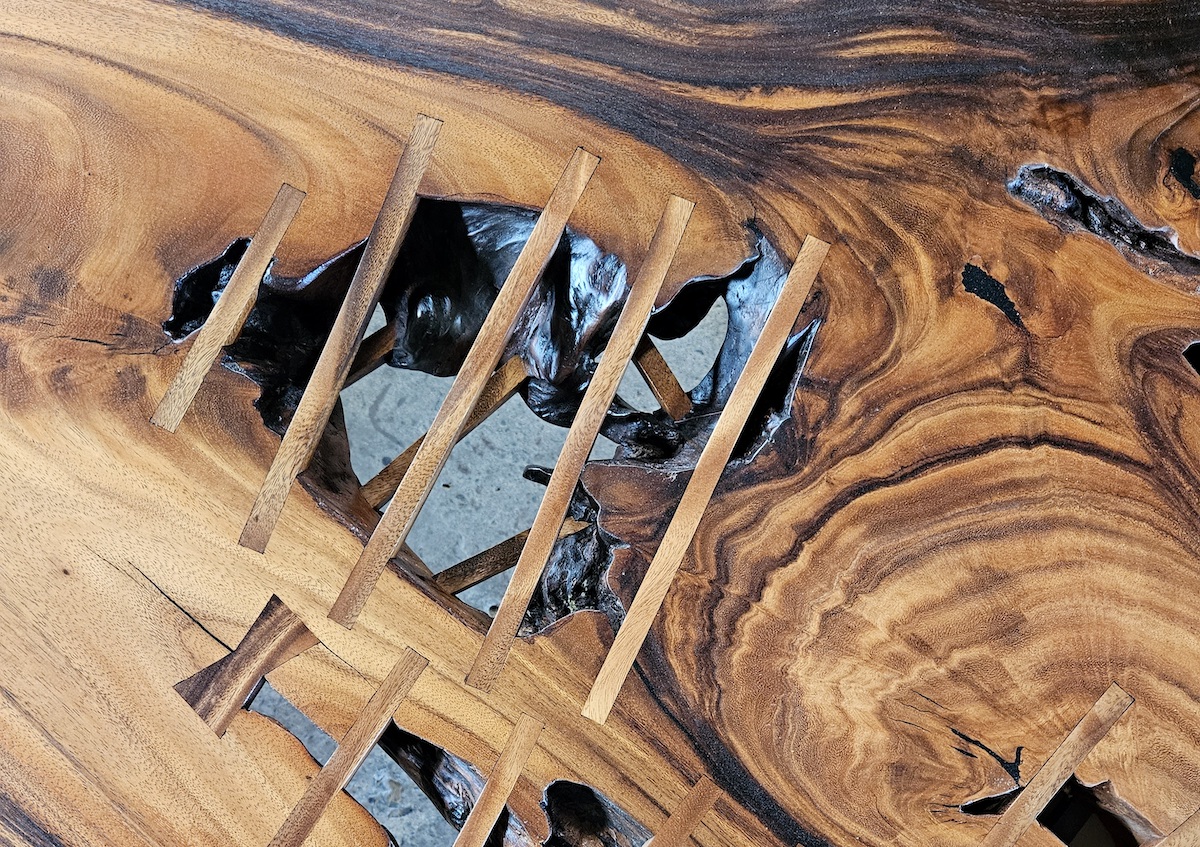Wood is a dynamic and living material, constantly responding to changes in humidity and temperature. Understanding wood movement is crucial when crafting or caring for wooden furniture, especially live edge pieces. In this article, we’ll delve into the fascinating world of wood movement, exploring its causes, effects, and how to effectively manage and preserve your cherished wooden treasures.

Understanding Wood Movement:
Wood movement occurs due to changes in moisture content within the wood fibers. These changes can be attributed to variations in environmental conditions. Here’s a closer look at the key factors influencing wood movement:
- Humidity: Wood absorbs and releases moisture in response to fluctuations in humidity. When humidity increases, wood expands, and when it decreases, wood contracts.
- Temperature: Temperature changes can indirectly impact wood movement by affecting humidity levels. Warm air can hold more moisture, while cold air typically contains less.
- Grain Orientation: The direction of wood grain significantly affects how wood expands and contracts. Tangential grain (across the growth rings) experiences more movement than radial grain (along the growth rings).
Effects of Wood Movement:
Failure to account for wood movement can lead to a range of problems in wooden furniture, including:
- Cracking and Splitting: As wood contracts, it can develop cracks or splits along the grain lines.
- Warping: Wood may warp or twist due to uneven moisture distribution.
- Glue Joint Failure: Inadequate allowances for wood movement can cause glue joints to fail, resulting in disassembled furniture.
How to Manage Wood Movement:
- Proper Drying: Ensure that the wood you use is adequately dried to its equilibrium moisture content (EMC) for your specific environment. This helps minimize future movement.
- Design Considerations: When crafting wooden furniture, incorporate design features that accommodate wood movement. These include expansion gaps, elongated screw holes, or floating tabletop attachments.
- Finish Selection: Use a quality wood finish to seal the wood’s surfaces. This helps slow down moisture exchange with the environment, reducing movement.
- Humidity Control: Maintain a stable indoor humidity level, ideally between 30% and 50%. Using a humidifier or dehumidifier can help regulate moisture levels.
- Seasonal Adjustments: Expect wood movement during seasonal changes. Be prepared to make minor adjustments to your furniture to accommodate expansion or contraction.
- Leave Room for Movement: When attaching wooden panels or tabletops, allow room for wood to expand and contract. Use slotted screw holes or clips that permit movement.
- Use Proper Joinery: Employ appropriate joinery techniques, such as mortise-and-tenon or dovetail joints, that are less susceptible to glue joint failure.
Preserving Wooden Treasures:
By understanding and effectively managing wood movement, you can preserve the beauty and integrity of your wooden treasures for generations to come. Whether you’re crafting a live edge dining table or restoring a vintage chest of drawers, embracing the dynamic nature of wood ensures that your pieces continue to stand as timeless testaments to nature’s beauty and craftsmanship.
At Reduxwood, we take pride in crafting live edge tables that stand the test of time. Each piece of wood we use is carefully dried to its equilibrium moisture content, and our expert craftsmen apply their skills to ensure that wood movement is managed with precision. When you choose a live edge table from Reduxwood, you’re selecting a piece that has been treated with the utmost care to withstand the natural rhythms of wood movement, providing you with a stunning and enduring addition to your home that will be cherished for generations to come.
